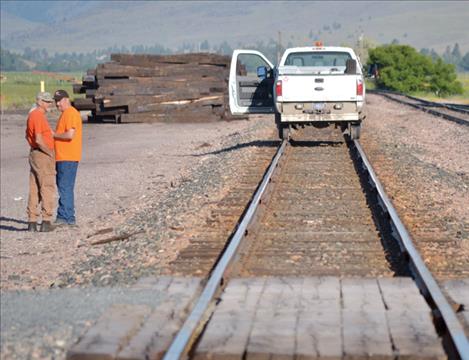Passenger rail conversation comes to rural Montana
Hey savvy news reader! Thanks for choosing local.
You are now reading
1 of 3 free articles.
RONAN — The Big Sky Passenger Rail Authority (BSPRA) held a series of six community engagement meetings throughout rural Montana last week, including one at the Ronan Boys and Girls Club. Community members gave their input on the possibility of the restoration of passenger rail service through southern Montana.
Passenger rail service ended in the southern part of the state 43 years ago, part of the ever-decreasing infrastructure and routes throughout the US. However, in 2020, community members from 12 Montana counties came together to form the regional passenger rail authority. Since then, eight additional counties have been added, making the BSPRA the largest transportation district in Montana.
With a goal of restoring and/or modifying past long distance Amtrak routes through the state, the organization is seeking community input to figure out what would work best for Montanans of the 21st century. Their current project, funded by the Montana Healthcare Foundation to focus on how rail transportation can reduce health disparities in the state, will document what benefits communities could experience from passenger rail service with support from the Montana State University Extension.
A report generated with the feedback of Montanans will be submitted to the Federal Railroad Administration in hopes that they will recommend renewal of services when they report to Congress in November. This is part of the Amtrack Daily Long-Distance Service Study currently underway.
At the Ronan meeting, every individual in attendance spoke up in support of the idea of a rail service. One attendee pointed out that, while the conversation centered around starting with a long-distance passenger service, unlike long-distance airlines flights, passengers don’t have to travel from one end to another. Most passengers end up getting on and off at interim stops, meaning a long-distance route is also a regional and local route all in one.
Numerous other benefits for regularly scheduled public transportation were discussed as well. “As I get older, it would help me from a safety standpoint, when driving becomes more of a challenge for those of use reaching retirement age and beyond,” one attendee commented. This sentiment was echoed by several others who included both road safety and easier access to more distant medical care concerns. Providing safe travel during bad weather or in the dark of night were rail travel advantages discussed along with the draw of being able to work via Wi-Fi while travelling. Beyond helping locals with transportation, some attendees pointed out an additional benefit of expanded train travel would be tourists having a new way to explore Montana in the winter. This could expand tourist season from just summertime to additional seasons and help small town economies.
The presenters also stressed that rail service would not compete with local public transportation, but rather provide a way to fill in existing gaps between services. They also are looking for more input on how best to support what they termed the “first and last mile,” meaning some people would still have to travel some distance to reach their nearest train station.
A public survey is available online and the BSPRA welcomes input from those who were unable to attend the meetings. The public input report will be available online next month at: bigskyrail.org.
Those who respond to the survey are asked to do so with these assumptions:
- Passenger train service will be a train twice a day in both directions.
- Trains will reliably travel through all weather conditions.
- Passengers can rely on a consistent schedule.
- Trains will offer uninterrupted Wi-Fi connection.
- Train fares will be affordable.
Overall, attendees expressed excitement over the benefits a commuter rail could provide. “Community and economic health are tied to individual health,” one attendee said. “When you know your community is thriving and vibrant and you’re proud of your town, there’s some intangibles that come to your mental and physical health with that.”
















